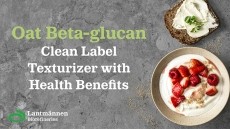Additives and carb backlash stumps bread innovation, says Mintel
This content item was originally published on www.bakeryandsnacks.com, a William Reed online publication.

Mintel’s global food science analyst Stephanie Pauk and Asia Pacific research manager Pam Yates said there had been a clear lack of innovation in the global bread category.
“I think one of the problems for packaged food in the US is a lot of backlash from concern over ingredients and additives, so that’s really a challenge for product development in order to be able to provide the same product with the same amount of shelf life, and also addressing consumers’ concerns for natural as well,” Pauk told BakeryandSnacks.com.
She said for bread makers, looking to the artisanal sector could inspire NPD ideas. It was about giving consumers a “customized approach”, she said, that made the product more of a luxury instead of a staple.
“If you’re going to make bread and treats more of a snack or something more premium, you want to have something you’re going to enjoy and is more of an artisan feel,” she said.
Moving away from carbs
Yates said that for Asia Pacific there was less concern over sugar but a clear desire to shift away from carbohydrates towards gluten-free and high-protein options.
“Of course with high protein, people are moving away from carbs, and bread’s obviously seen as a high carb product. So we’re seeing a change from that POV,” she said.
To innovate, bread makers needed to accept the shift away from carbohydrates, she said, and could innovate with naturally high in protein seeds and ancient grains.
Pauk said this strategy would also prove successful in the US. “Especially with ancient grains seen as having a healthy halo – not as villainous as perhaps wheat and gluten is right now.”
Yates said there was also scope to innovate in terms of product size and packaging – offering variety packs for families looking to eat different bread products.
Promising? Protein, sprouted grains and oats
Both analysts agreed that ancient grains offered plentiful opportunity for bread makers to up the protein content of products. In addition, Pauk said sprouted grains, while less known, were full of opportunity because of the health halo around them.
Yates added that oats were also an extremely exciting ingredient that should be carefully considered by bread manufacturers. “Oat is doing so well in so many categories and everybody knows it’s very good for you, plus in markets like Europe and in the US there are approved health claims for oats, so it’s a brilliant new ingredient to incorporate,” she said.



























